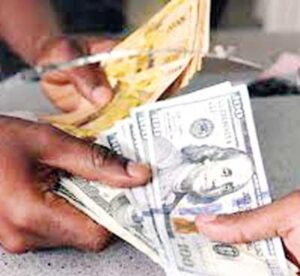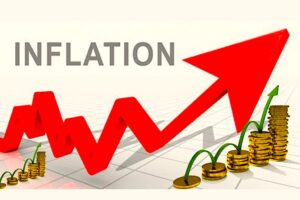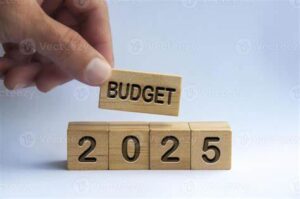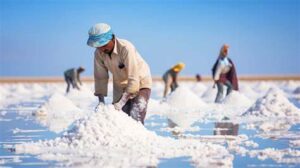
Sri Lanka’s Economic Recovery Hit by Trade Tensions, Salt Shortage and , Cronyism
- CNL Reporter
- May 24, 2025
- Weekly Economic Review
- Salt Shortage, Sri Lanka
- 0 Comments
Weekly Economic Review
Sri Lanka is navigating a delicate economic path in 2025, marked by external trade pressures and internal policy missteps. A salt crisis, triggered by production shortfalls and exacerbated by state intervention, has sparked allegations of a new “salt mafia,” reminiscent of past controversies involving rice and maize.
This situation arises amid intensifying U.S. tariffs—rooted in trade measures from the Trump era—that impact up to 44% of Sri Lankan exports to the U.S., the country’s largest trading partner. Despite a recent balance of payments (BoP) surplus, these external and internal challenges present formidable threats to Sri Lanka’s economic stability.
The government has been criticized for its lack of foresight and preparedness. Although a second delegation has been dispatched to Washington, D.C., to negotiate trade terms, tangible progress remains uncertain.
While local task forces and committees have debated the matter, no definitive policy direction has emerged. Critics argue Sri Lanka is entangled in a global capitalist system that perpetuates unequal trade dynamics, urging policymakers to acknowledge these structural challenges and devise strategies to protect national interests.
In a heartening revelation this week, the Central Bank anticipates a 0.9 percent of GDP increase in the current account surplus for the year 2025 compared to 2024. This would make it the third consecutive year with a surplus Governor
Sri Lanka’s current account surplus was US $948 million, in the first quarter of 2025 and it was primarily driven by higher inflows of workers’ remittances. The merchandise trade deficit also expanded in March, though it showed a slight improvement compared to February

It has, announced a further reduction of the Overnight Policy Rate (OPR by 25 basis points to 7.75percent, he noted that historically this achievement continued in the past two years.
According to finance ministry data a current account surplus was US$ 1.43 billion in 2023 and $ 1.31 billion in 2024 as a result of import restrictions…
“The Central Bank is comfortable with the external sector outlook in terms of the ability to build reserves, and maintain a smooth and stable exchange rate. If any volatility comes, they can intervene, in both ways.”
In a statement, it noted that deflationary conditions have begun to ease since March 2025, as predicted. The latest projections show signs of a more gradual pickup in inflation in the near term than previously anticipated.
Accordingly, inflation is expected to turn positive in early third quarter of 2025 and gradually align with the target thereafter .Core inflation is also expected to increase gradually in the coming months from the current low levels. Inflation expectations are also aligning with the inflation target.

According to the Central Bank, Sri Lanka’s GDP is projected to grow by 3.5% in 2025, slower than the rebound seen in 2024. Inflation trends suggest mild deflation in April 2025 at 0.8%, with non-food items experiencing deeper deflation, while food prices increased by 2.9%. Agriculture shows mixed recovery: tea production improved, but rubber and coconut lag behind due to erratic weather.
The monetary environment is relatively accommodative, with the Average Weighted Prime Lending Rate declining to 8.47% and call money rates dropping to 7.75%. Market liquidity remains high at Rs. 157.78 billion. Fiscal dynamics also show promise, as government securities were oversubscribed by 2.4 times and foreign investor interest rose by 1%.
Despite these positive signals, external vulnerabilities persist. The rupee depreciated by 2.3% against the U.S. dollar, reflecting pressure from global oil price fluctuations and geopolitical risks. The Central Bank projects a current account surplus for 2025—marking the third consecutive year—with Q1 alone posting a US$948 million surplus, largely driven by increased remittances. However, the trade deficit widened in March, hinting at a potentially unsustainable trajectory.
Import restrictions, which previously helped narrow the current account deficit, are now being relaxed. This could increase imports and weaken the surplus. At the same time, export growth is slowing due to U.S. tariffs and global market uncertainties. Tourism earnings and foreign capital flows also remain volatile. With heavy foreign debt repayments due in 2025 and 2026, Sri Lanka must carefully manage reserves to avoid renewed BoP stress.
The 2025 budget reflects the country’s fiscal constraints. With revenue expected at LKR 4,950 billion and total expenditure forecast at LKR 7,190 billion, the deficit stands at LKR 2,200 billion. This fiscal gap underscores the importance of international trade agreements and prudent economic management.

A Sri Lankan delegation will travel to Washington, D.C., for a second round of in-person discussions on tariff-related issues, following an invitation from the Office of the United States Trade Representative (USTR). The initiative follows several virtual meetings and reflects efforts to strengthen economic ties between the two nations.
According to a statement released after a high-level preparatory meeting chaired by President Anura Kumara Dissanayake, the upcoming negotiations aim to enhance trade cooperation and secure favorable outcomes aligned with Sri Lanka’s current economic priorities
In this context, key officials from finance, trade, and foreign affairs ministries have been coordinating strategies to address tariff concerns and reinforce economic cooperation with the U.S. These talks come as volatility returns to global markets, spurred by a new U.S. proposal to impose a 50% tariff on EU imports—rattling investor confidence and driving down stock indices.
Domestically, the government is also under fire for mismanaging the salt supply. Excessive rains hampered salt production in key areas like Hambantota and Mannar. In response, over 150,000 metric tons of salt have been approved for import.
However, critics accuse the state of fostering a monopolistic environment by prioritizing local producers and limiting imports. Opposition MP Rauff Hakeem condemned the government’s handling, noting that salt prices surged from Rs. 130 to Rs. 360 per packet—far above the market value. He also raised concerns about private traders being appointed to the board of a state-run salt company.
MP Mujiber Rahuman added that imported Indian salt could be sold at far lower prices even with taxes, yet imports were reportedly halted to protect domestic producers. Trade Minister Wasantha Samarasinghe confirmed that import plans were scaled back following requests from a salt producers’ association, echoing earlier mistakes with rice import delays.

These developments expose systemic flaws in Sri Lanka’s economic policy framework, where protectionist measures serve producer interests at the expense of consumers. Economists warn this approach reflects outdated mercantilist thinking, drawing parallels to colonial-era trade monopolies. They cite Adam Smith’s argument that producer-driven policy distorts markets and burdens the public with inflated prices.
Analysts urge the government to lift import licenses and open up competition to restore market efficiency. This would prevent rent-seeking behavior and align prices with global trends, benefiting consumers and fostering fairer trade. The “salt mafia” controversy, much like previous crises in rice and maize, illustrates the dangers of state-facilitated monopolies and underscores the need for transparent, market-based solutions.
As Sri Lanka grapples with overlapping domestic inefficiencies and international pressures, its economic recovery remains precarious. The success of upcoming U.S. negotiations, fiscal discipline, and reform of internal market policies will determine whether the country can navigate these turbulent waters and sustain long-term growth.

